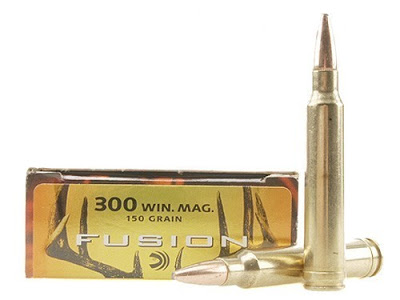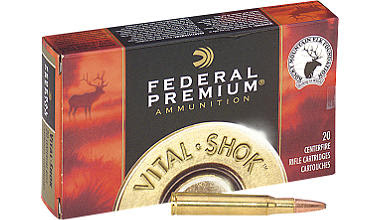
My thanks to Jim "Hoot" Gibson, USAF, Retired of Wilson County, Texas for bringing this to my attention. Further research on the topic found this snippet at Defense Industry Daily.
ATK subsidiary Federal Cartridge Co. in Anoka, MN received a $49.9 million firm-fixed-price, indefinite-delivery/ indefinite-quantity contract for .300 Winchester magnum ammunition.
Folks here in Alabama have been loading .300 Winchester Magnums with pulled .30-06 AP bullets for some time now and find they work quite spectacularly at distance. (Our first experiments were back in 1995, if memory serves me correctly. And what they do to body armor you don't even want to see.) Nice to know the Army finally caught up with the constitutional militia.
Mike
III
American Snipers Go Magnum
June 18, 2009: The U.S. Army has ordered 38.4 million rounds of .300 Winchester magnum ammunition for its newly modified M-24 sniper rifles, as well as similar SOCOMs Mk13 models. The new ammo will cost about $1.30 per round. The .300 Winchester magnum will be ordered in minimum lots of 56,160 rounds (117 boxes of 480 rounds each). The entire 38.4 million rounds will last a while.
All this is in response to requests from snipers for a longer range weapon, but not one as bulky and heavy as the 30 pound .50 caliber rifle (which is good to about 2,000 meters). Thus the army is modifying existing M24 rifles to fire the more powerful .300 Winchester Magnum round. It was felt that this gave the snipers all the additional range they needed, without requiring a much heavier rifle. SOCOM has been using this approach since the early 1990s.
The calls were loudest from snipers operating in Afghanistan, where U.S. Army and Marine Corps shooters wanted a sniper rifle that can consistently get kills out to 1,800 meters. The current 7.62mm round was good only to about 800 meters. The 300 Winchester magnum is a more powerful, but not much larger, round than the current 7.62mm one. By replacing the barrel and receiver of the $6,700 M24 sniper rifle, for about $4,000, you can fire the .300 Winchester Magnum round. This is longer (at 7.62 x 67mm) than the standard 7.62x51mm round, and is good out to 1,200 meters. An improved version of the round is expected to extend that range another 200 meters or so.
There was another option, and that was to replace the barrel and receiver of the M24 sniper rifles to handle the .338 (8.6mm) Lapua Magnum round. Thus you still have a 17 pound sniper rifle, but with a round that can hit effectively out to about 1,600 meters. British snipers in Iraq, and especially Afghanistan, have found the Lapua Magnum round does the job at twice the range of the standard 7.62x51mm round. The 8.6mm round entered use in the early 1990s, and became increasingly popular with police and military snipers. Dutch snipers have used this round in Afghanistan with much success, and have a decade of experience with these larger caliber rifles. British snipers in Afghanistan are also using the new round, having converted many of their 7.62mm sniper rifles. Recognizing the popularity of the 8.6mm round, Barrett, the pioneer in 12.7mm sniper rifles, came out with a 15.5 pound version of its rifle, chambered for the 8.6mm. But the U.S. preferred the lighter .300 Winchester magnum solution.
This is not the first time the U.S. Army has quickly responded to sniper needs. Two years ago, in response to requests from snipers operating in urban areas of Iraq, the U.S. Army began issuing the M110 SASS (Semi-Automatic Sniper System). Urban snipers often have multiple targets, at relatively short ranges. They needed a semiautomatic rifle. Previously, many snipers have had success using tuned up M-14s (from the 1960s) as sniper rifles. While semi-automatic and rugged, the M-14 wasn't designed to be a sniper rifle. The M110 was a better semi-automatic sniper rifle, since it is inherently more reliable and accurate. As far back as World War II, it was known that there were many situations where a semi-automatic sniper rifle would come in handy. But it's taken over half a century to solve the reliability and accuracy problems.
The M110 is a based on the AR-10 rifle. The U.S. Navy has been buying a similar weapon, the SR25. This is also known as the Mk11 Sniper Rifle System (SRS). These new semi-automatic sniper rifles are 7.62mm weapons based on the designs of M-16 creator, Gene Stoner. The basis for the M-16 was the AR-15, and a 7.62mm version of that weapon was called the AR-10. About half the parts in the SR25 are interchangeable with those in the M-16. The Stoner sniper rifles achieved its high accuracy partly by using a 20 inch heavy floating barrel. The "floating" means that the barrel is attached only to the main body of the rifle to reduce resonance (which throws off accuracy.)
The M110 weighs 17.3 pounds in combat, and about 70 pounds with all components of the system. The M110 can use a ten or twenty round magazine. The 40.5 inch long rifle can have a six inch tube attached to the barrel, which reduces the noise and flash made when the rifle fires, and largely eliminates nearby dust rising into the air, which often gives away the snipers position.
The M110 will gradually replace many of the bolt-action M24s, while the remaining M24s will be converted to fire the .300 Winchester Magnum, for those snipers working somewhere, like Afghanistan, where more range is needed..

8 comments:
I don't claim to have the wisdom of the decision makers,but honestly, if I planned to replace barrels and actions, I would lean much more toward the 338; I've never hear anyone find fault wiht anything about that round, from recoil to measured energy at impact, to ballistics and range...
The 40.5 inch long rifle can have a six inch tube attached to the barrel, which reduces the noise and flash made when the rifle fires, and largely eliminates nearby dust rising into the air, which often gives away the snipers position.
We wouldn't want to actually call it a silencer, or suppressor now... silencer and suppressors are only for assassins and bad people
Maybe I'm just a curmudgeon before my time at age 40 but having been a guncrank since 1992 and doing quite a bit of long range shooting in 1993-5 (I had access to private 600 and 1,000 yard ranges and am so very spoiled because of it) I still cannot get the fixation with the .300 Win Mag.
The venerable, old .30-06 can come so close ballistically that when you consider the tradeoffs of dealing with the belted magnum I just don't see the advantage.
I happen to have my Lee reloading book handy. Take the 168 Sierra MatchKing for example:
The hottest .30-06 they list is 59 grains of Accur 4350 at 2825 fps. For the .300 it lists 72 grains of the same powder at 3060 fps.
So, you're looking at consuming roughly 21% more powder per round for not quite a 10% advantage in velocity. Not to mention more muzzle blast and recoil along with the added headaches associated with sizing belted brass.
But for those who will cannibalize perfectly good .30-06 AP to play that game I'll gladly take the '06 primed brass and powder off your hands *grin*.
The M110 semi-auto sounds like a neavy fersikon of the DPMS LR308B - heavy 18" barrel, AR-pattern, flattop/rail receiver, weighs about 12 pounds with a 6-20power scope. And extremely accurate, even with the standard 147 gr round (it really likes the 168gr Fed Match ammo.) Good luck finding one of these at your local dealer now.
Any .308/7.62 rifle will have its effective range extended via the use of 175 grain SMKs instead of the 168s. Further, off-the-shelf civilian Remington 700s with the 5R rifling will hit accurately at over 1,000 yards (in the right hands, just like any other rifle) - and they cost considerably less than $4,000 or $6,500 or whatever absurd amounts are being spent on the military's bolties.
Yes, yes, I know - more of the money goes to good glass than anything else - but why not cannibalize the glass and use it on top of the 5R rifles, and save $3K or more per rifle. That $3K will get more training in for the existing snipers, or buy more equipment/spares. Or reduce the incredible deficit by 0.00000005% or so. :>) Any way you look at it, it'd be a bargain.
The spec for the army's 300 win mag round consists of Sierra 200 gr Matchkings over Federal Match (magnum?)primers....good luck buying those for the next couple of years
Gandhi was a hawk and all about violence. The liberal media has written history about him in a false light.
Fact of the matter which history proves very clearly is, Gandhi once free of the UK attacked the Allah worshiping country next door to India. He had it planed to start war just as soon as he could once out from under the UK.
I recall a section in a book read some years ago characterizing the Russian adventure in Afghanistan as [paraphrased] a bunch of city kids with a rifle good out to 600m up against locals who have been shooting since childhood who routinely shoot goats at 1000m.
Sounds familiar.
Post a Comment